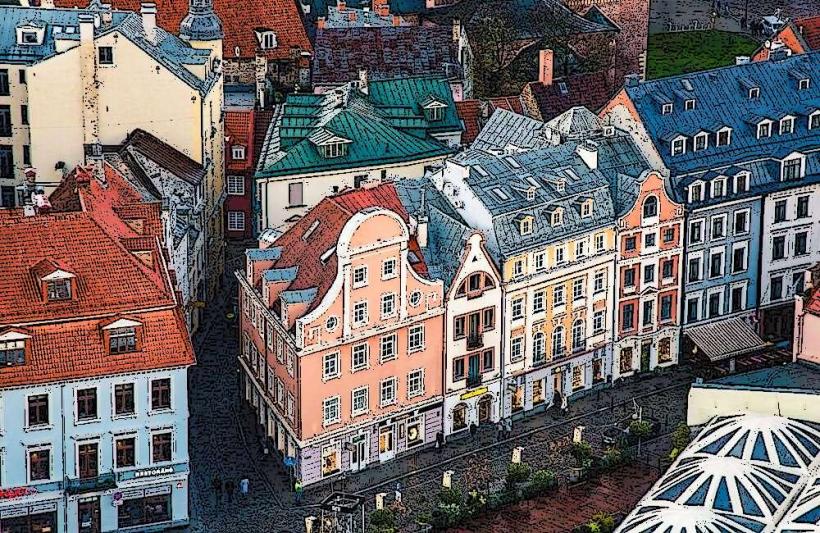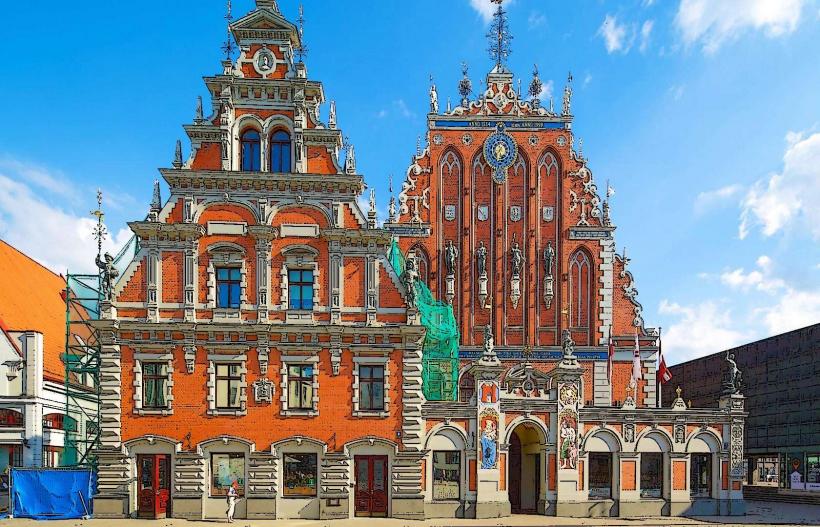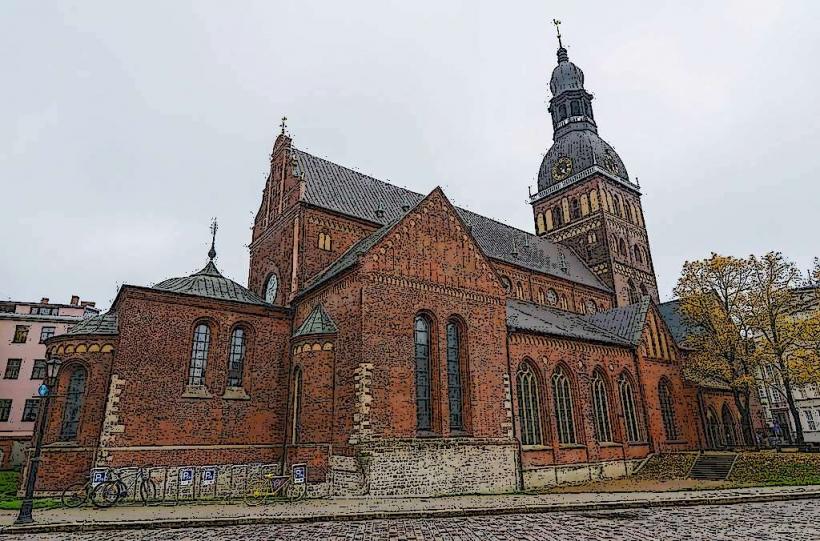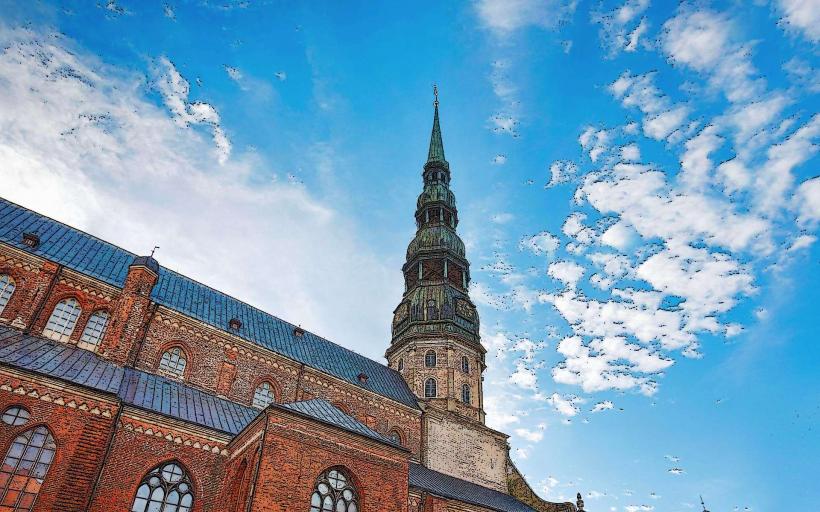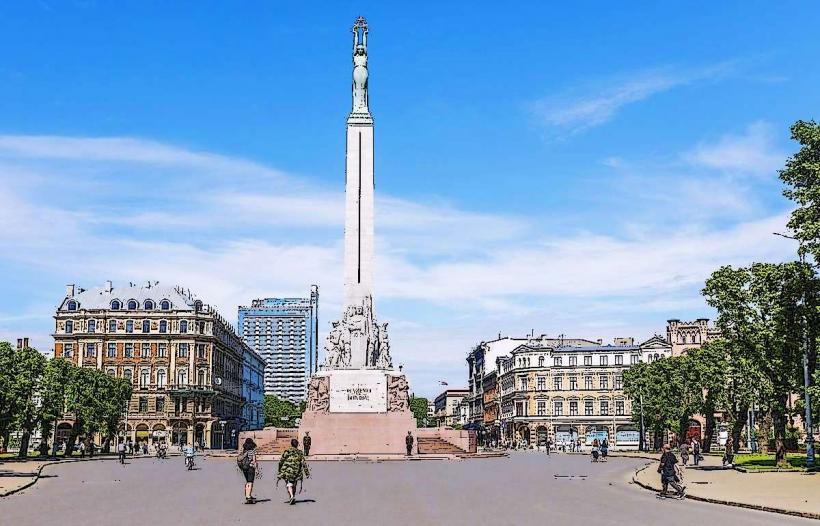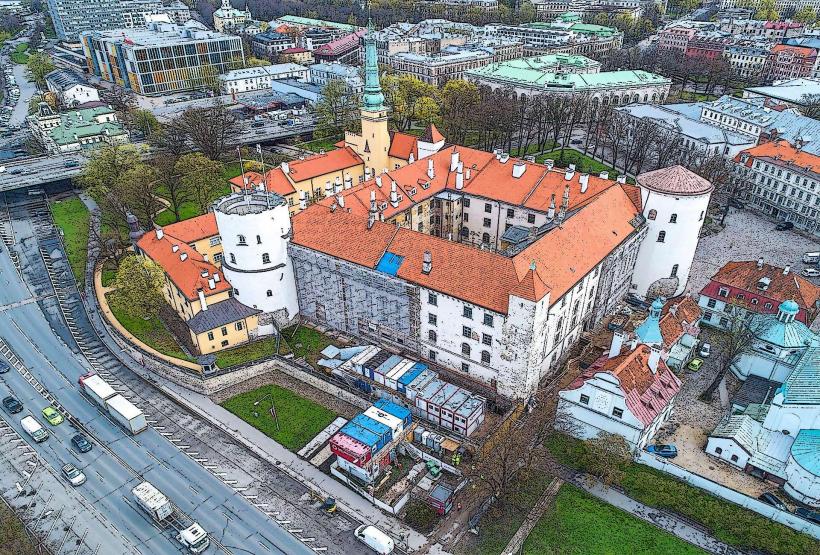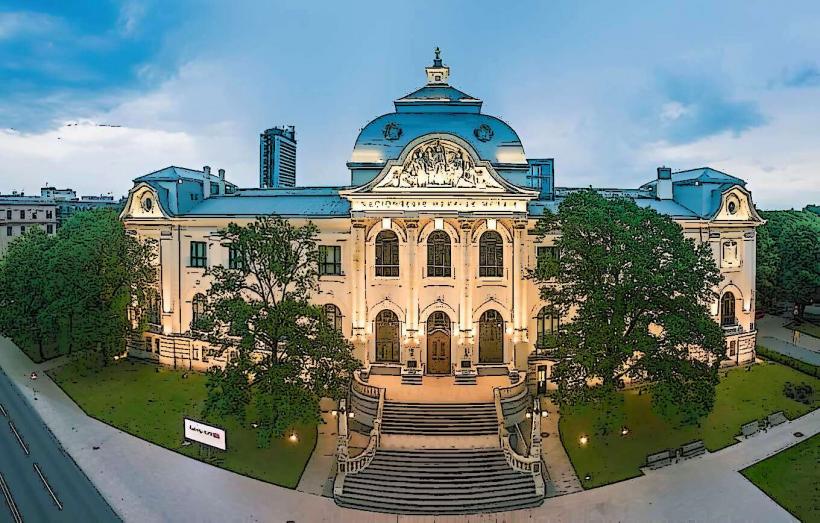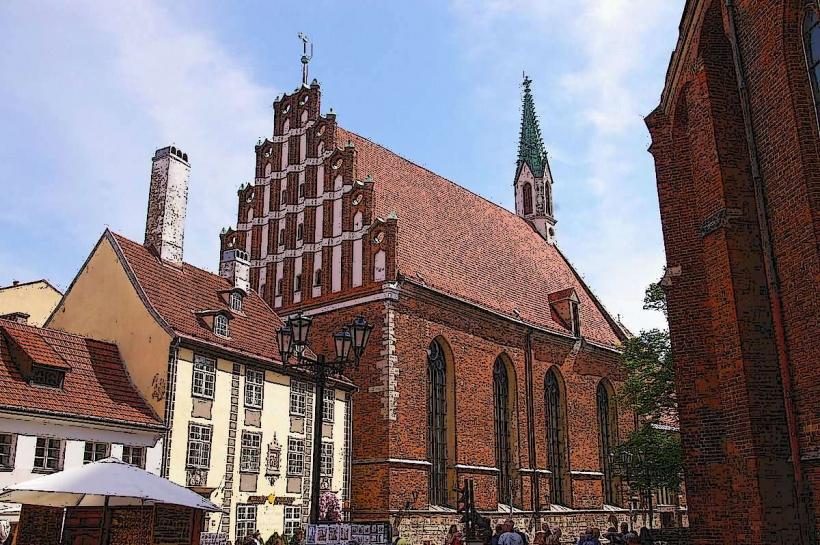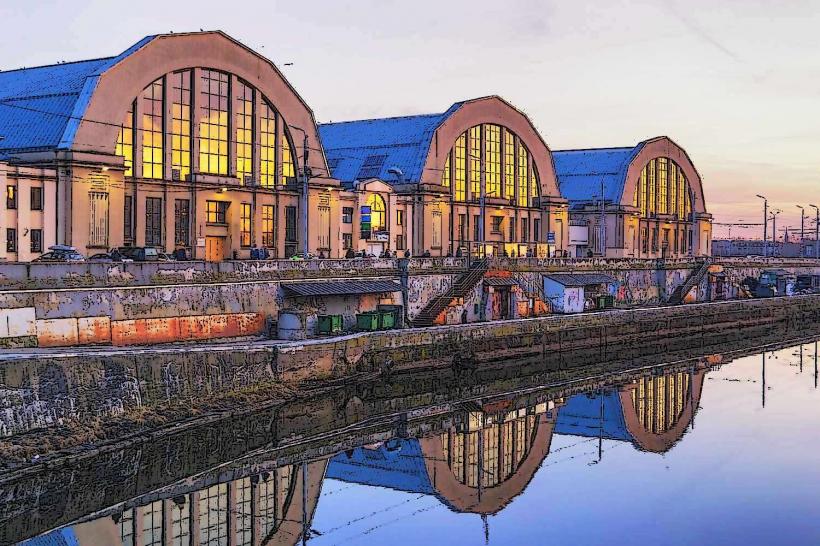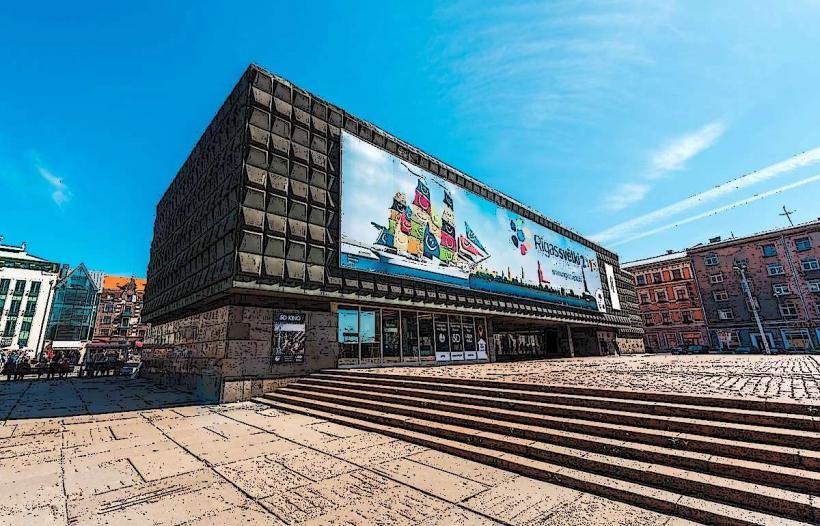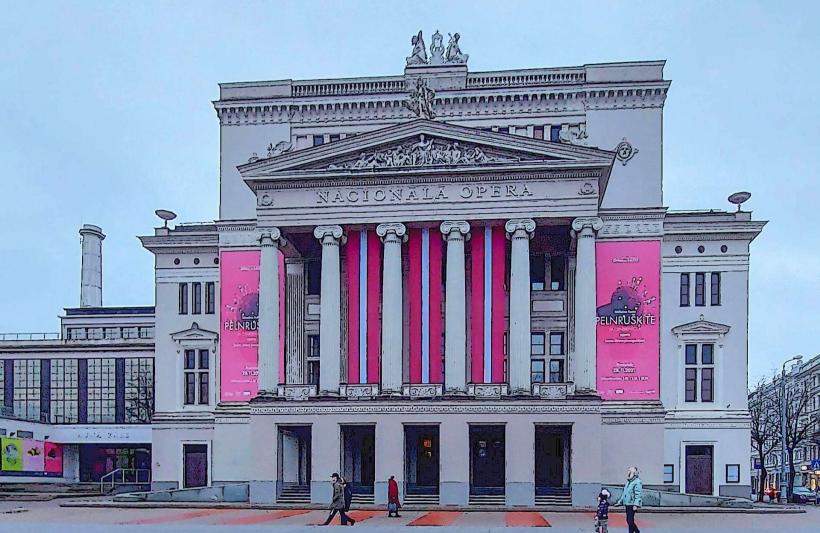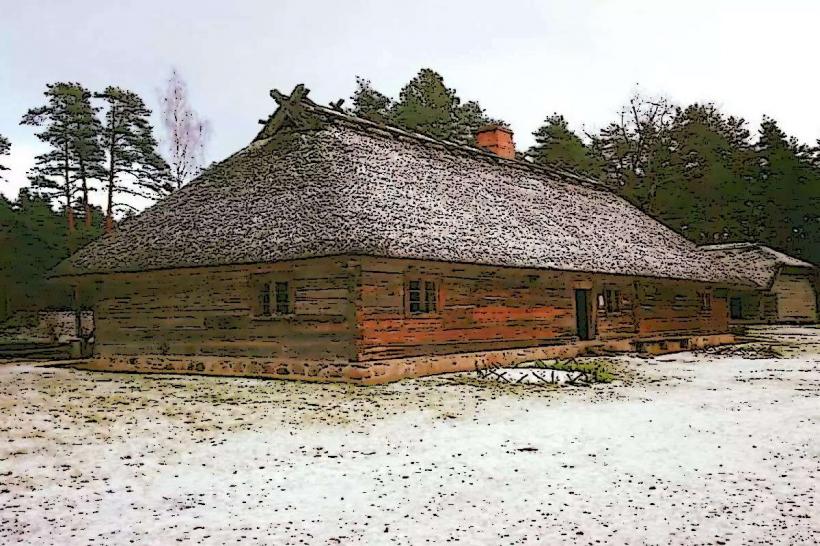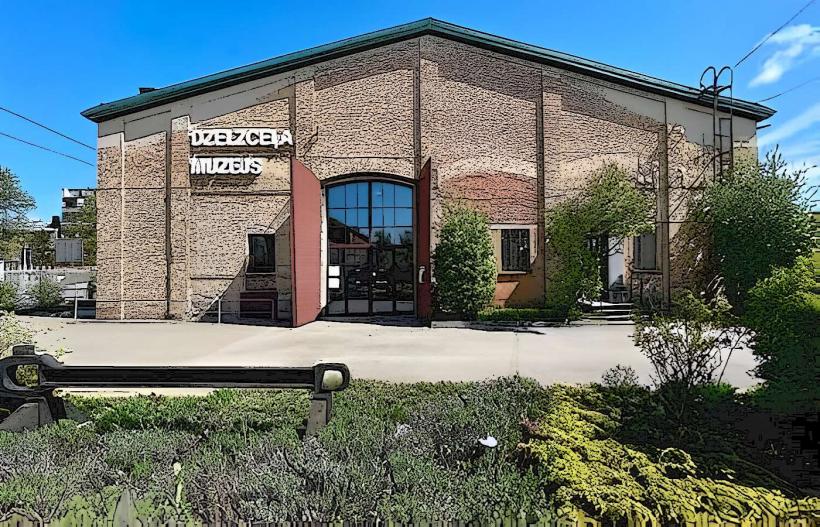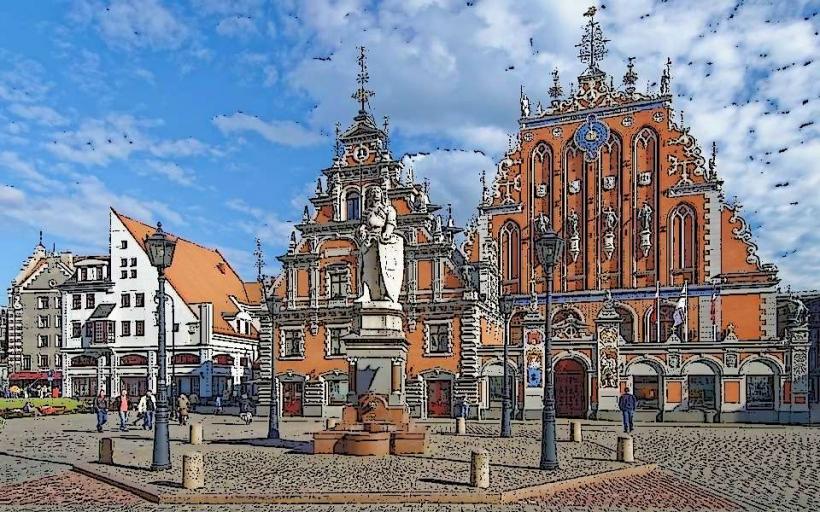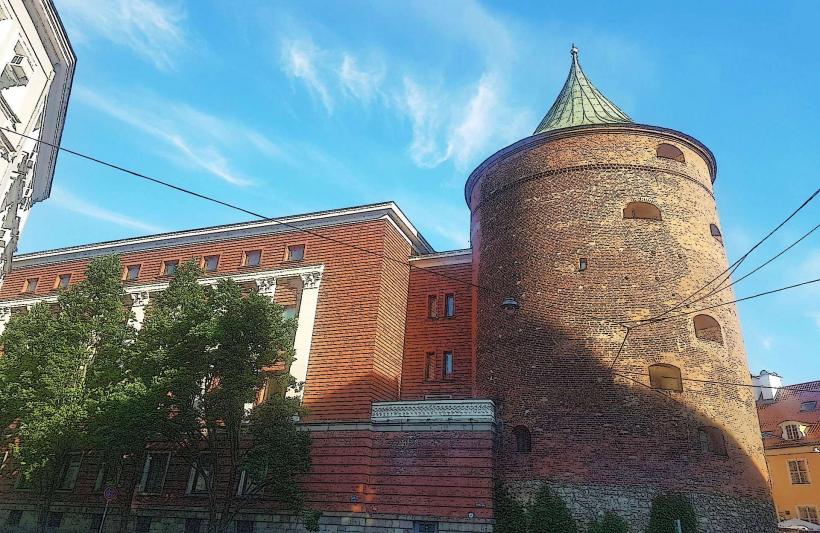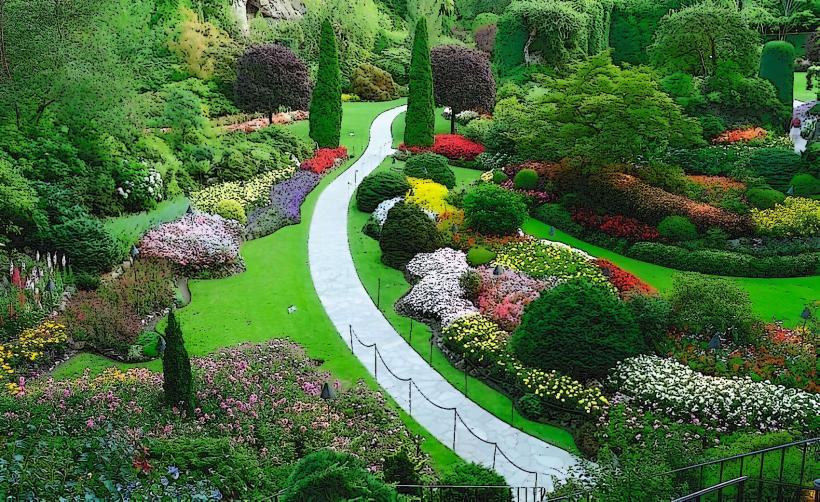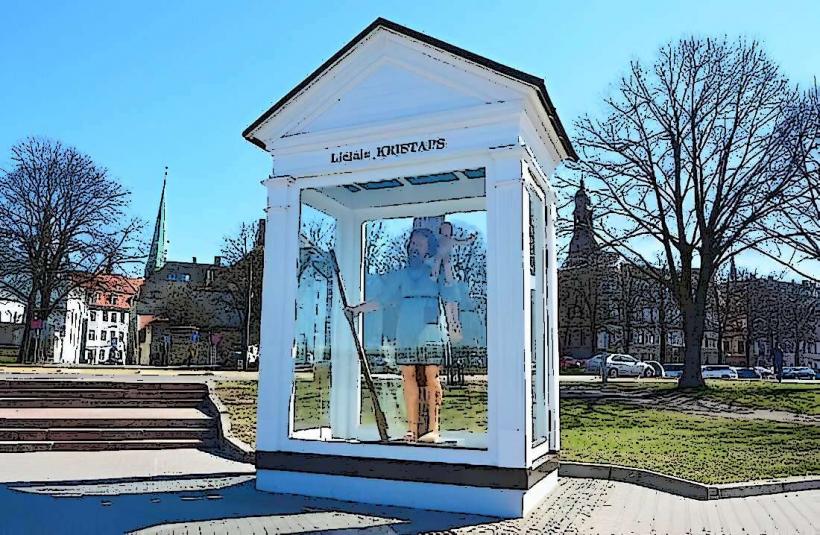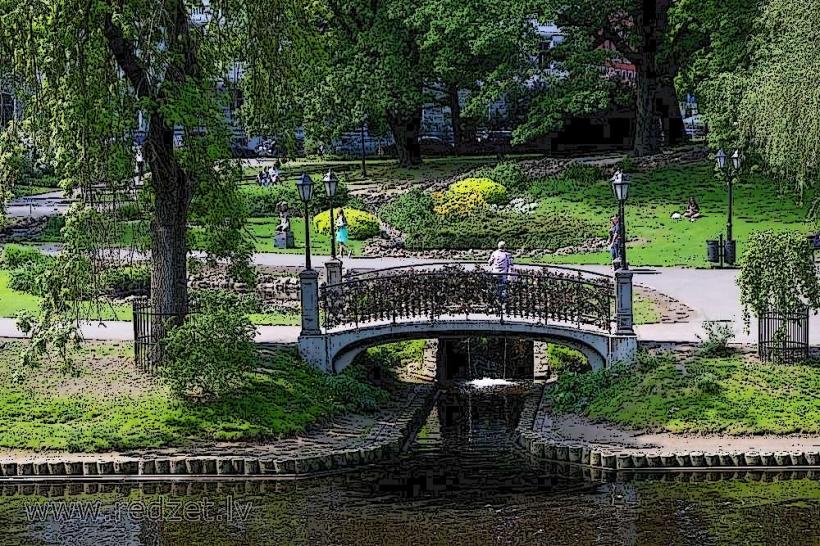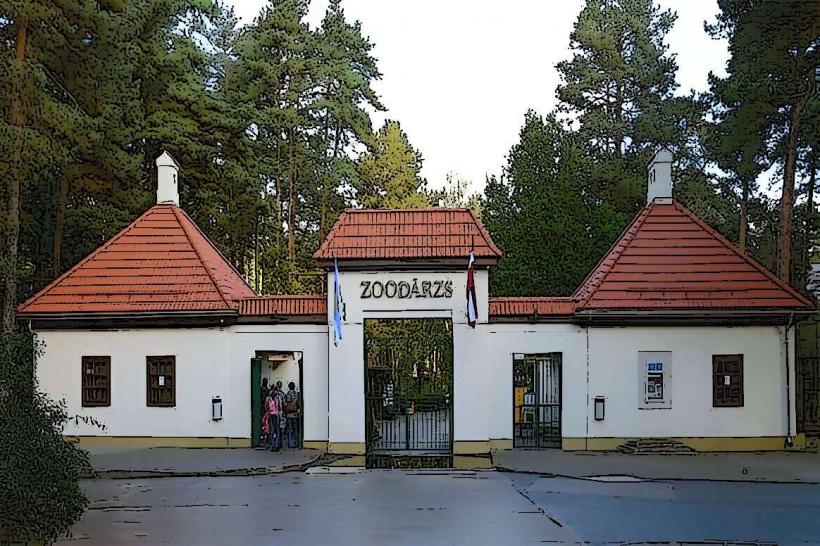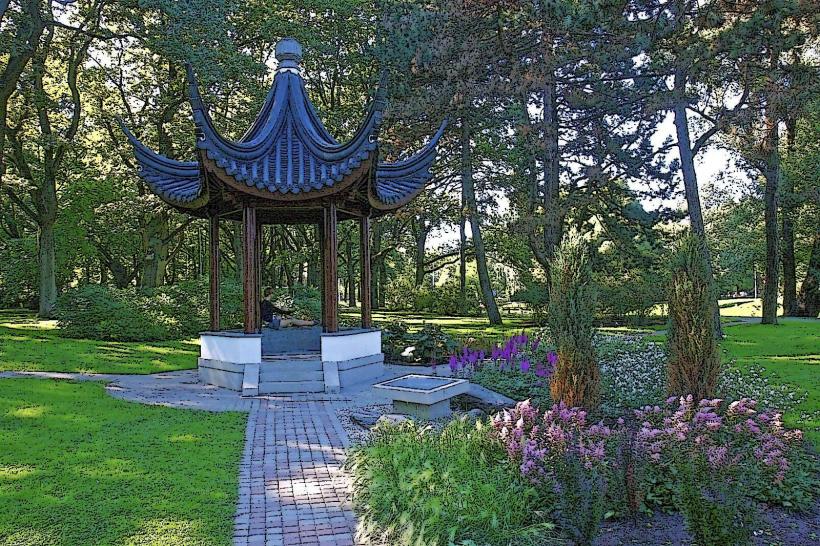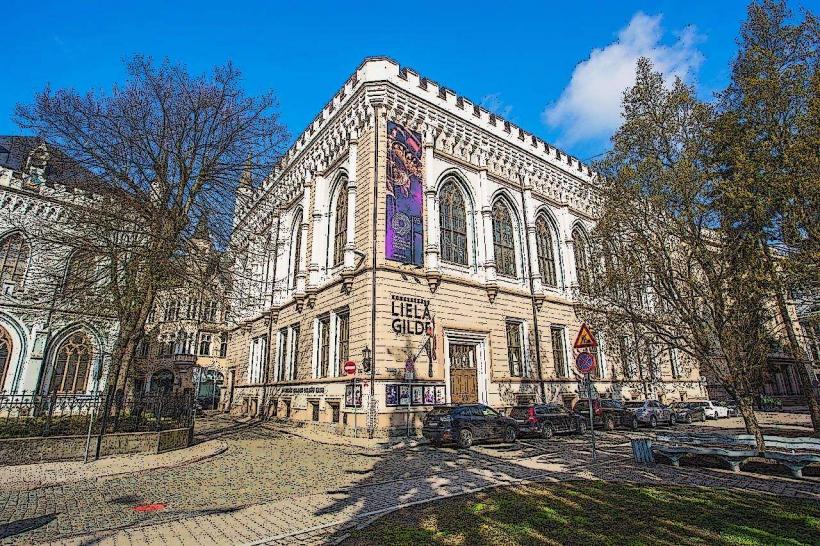Information
City: RigaCountry: Latvia
Continent: Europe
Riga is the capital and largest city of Latvia, located in the Baltic region of Europe. Founded in 1201, it is a city with a deep historical and cultural heritage, rich in architectural diversity and modern developments. As the political, economic, and cultural center of Latvia, Riga is one of the most dynamic cities in the Baltic States and serves as an important hub for both the region and Northern Europe.
Geography and Setting
- Location: Riga lies on the coast of the Gulf of Riga, an arm of the Baltic Sea, and is situated at the mouth of the Daugava River, which flows into the Gulf. Its location at the crossroads of Eastern and Western Europe has made it a strategic city throughout history.
- Climate: Riga experiences a temperate maritime climate, with mild summers and cold winters. Summer temperatures typically range from 20°C to 25°C (68°F to 77°F), while winter temperatures can drop to -5°C (23°F) or lower. The city sees moderate precipitation throughout the year, with the most rainfall occurring in late summer and autumn.
Historical Significance
- Medieval Origins: Riga was founded in 1201 by the German bishop Albert of Buxhoeveden as a strategic point for trade and the spread of Christianity. Over the centuries, it became a center for the Hanseatic League, a powerful medieval trading network, contributing to its growth as a key commercial hub in Northern Europe.
- Swedish and Russian Rule: In the 17th century, Riga came under Swedish rule, and later, in the 18th century, it was incorporated into the Russian Empire after the Great Northern War. Under Russian rule, Riga grew rapidly as a port city and industrial center.
- Independence and Soviet Period: Riga became part of independent Latvia in 1918, but was later occupied by the Soviet Union from 1940 to 1941 and again from 1944 to 1990. The city’s architecture, particularly from the early Soviet period, reflects this turbulent history, with Soviet-style buildings blending with earlier European influences.
Key Attractions
Old Town (Vecrīga):
- Vecrīga is the historic center of Riga and a UNESCO World Heritage site. It is a maze of narrow cobblestone streets, medieval buildings, and charming squares. Key sites in the Old Town include the House of Blackheads, the Riga Cathedral, and St. Peter’s Church, which offer a glimpse into the city's medieval past.
- The House of Blackheads, originally built in the 14th century, is one of the most recognizable buildings in Riga. It was once the guild hall of the Brotherhood of Blackheads, a society of unmarried German merchants in the city.
Riga Central Market:
- The Riga Central Market is one of the largest and most vibrant markets in Europe. Housed in former German Zeppelin hangars, the market sells everything from fresh produce to crafts and local specialties. It’s an excellent place to experience the local culture and taste traditional Latvian foods, such as grey peas with ham, rye bread, and smoked fish.
Art Nouveau Architecture:
- Riga is renowned for its Art Nouveau (Jugendstil) architecture, particularly in the Albert Street area. The city has one of the largest collections of Art Nouveau buildings in the world, with ornate facades, intricate details, and elegant decorative elements. The Riga Art Nouveau Centre offers an exhibition and insight into this unique architectural style.
Riga Castle:
- Riga Castle, located on the banks of the Daugava River, is one of the city’s most important historical landmarks. Built in the 14th century, it has served as the residence of the Latvian president since the country’s independence. The castle also houses the Latvian National Museum of History, offering exhibits on Latvia’s history from medieval times to the present.
The Freedom Monument:
- The Freedom Monument is a symbol of Latvia’s independence and freedom. Located in the city center, it was erected in 1935 to commemorate the soldiers who fought for Latvia's independence during the War of Independence (1918-1920). The monument is an important national symbol and a focal point for celebrations on Latvia's Independence Day.
Latvian National Opera:
- The Latvian National Opera is one of the cultural gems of Riga, offering a wide range of operas, ballets, and concerts. The building itself is an architectural masterpiece, and it hosts performances by world-class artists. The Opera House is a key venue in the city's vibrant cultural scene.
KGB Building (Museum of the Occupation of Latvia):
- The former KGB headquarters in Riga is now home to the Museum of the Occupation of Latvia, which tells the story of Latvia’s time under both Soviet and Nazi occupation. The museum is an important place for understanding Latvia's 20th-century history and the impact of foreign domination on its people.
Jurmala Beach:
- Located just outside of Riga, Jurmala is a popular seaside resort town known for its beautiful sandy beaches along the Gulf of Riga. It is a great place to relax, swim, and enjoy the fresh air. The town also has a rich cultural scene, with festivals, concerts, and historic wooden houses.
The Museum of the History of Riga and Navigation:
- Housed in the Riga Dome Cathedral, the Museum of the History of Riga and Navigation offers exhibits on Riga’s maritime history, its role as a trading hub in the Middle Ages, and the city’s growth over the centuries.
Culture and Lifestyle
- Vibrant Cultural Scene: Riga is a cultural capital of the Baltic region, with a thriving arts and music scene. The city hosts various festivals, including the Riga Opera Festival, the Riga Film Festival, and the Riga Festival, celebrating the city’s culture and traditions.
- Multilingual Population: Riga’s population is diverse, with a mix of ethnic Latvians and Russian speakers. Latvian is the official language, but many people, particularly in the urban areas, speak Russian and English, making it easy for visitors to communicate.
- Cuisine: Traditional Latvian cuisine is hearty and flavorful, with a focus on potatoes, rye bread, pork, and dairy products. Some dishes to try include speķa pīrāgi (bacon pies), grey peas with bacon, and Jāņu siers (a type of cheese). Riga also has a burgeoning craft beer scene, with numerous local breweries offering unique brews.
Transportation
- By Car: Riga is easily accessible by road from other major cities in the Baltic region, such as Tallinn, Vilnius, and St. Petersburg. The city is well-connected via highways, and parking is available throughout the city, though traffic can be busy, particularly in the city center.
- By Train: Riga’s central train station provides regular connections to other parts of Latvia and the neighboring countries of Lithuania, Estonia, and Russia. Train travel is a popular option for visitors arriving from surrounding regions.
- By Air: Riga International Airport is the busiest in the Baltic States, with flights connecting the city to many major European cities. It’s located about 10 kilometers (6 miles) from the city center, with easy transport links to the city by bus, taxi, and shuttle.
Atmosphere
- Architectural Charm: Riga's old town, with its mixture of Gothic, Baroque, and Art Nouveau buildings, gives the city a distinct and charming atmosphere. The vibrant street life, cafes, and squares add to the dynamic feel of the city, blending its medieval roots with modern European flair.
- Relaxed and Modern: While Riga has a rich historical background, it also embraces modernity with its boutiques, cafes, shopping centers, and cultural venues. The city offers a blend of old-world charm and cosmopolitan energy, making it an appealing destination for both relaxation and exploration.
Riga is a city where history, culture, and modernity meet in a stunning blend. With its medieval heart, grand architecture, vibrant arts scene, and dynamic lifestyle, Riga remains one of the most interesting and captivating cities in the Baltic region. Whether exploring the narrow streets of the Old Town, visiting the Freedom Monument, or enjoying a concert at the Latvian National Opera, there is much to discover in this cultural gem of Northern Europe.

